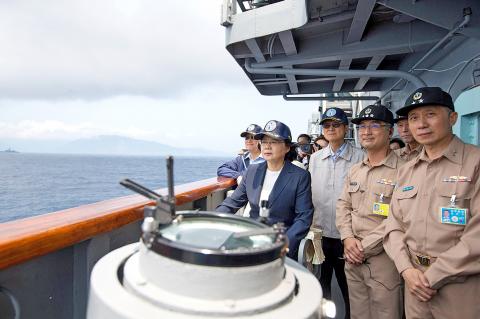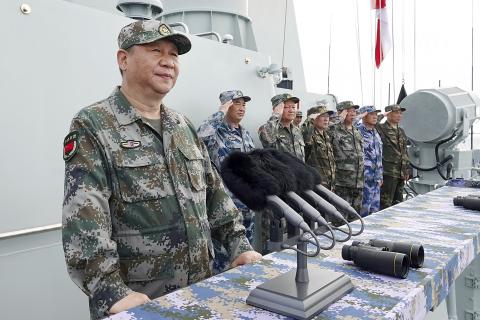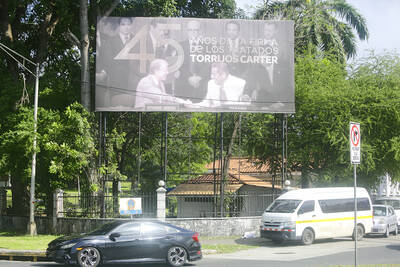Back when the US had its “two Chinas” policy, in July 1977, I was posted from the US Embassy in Taipei to the US Liaison Office in Beijing. For eight years from 1971 through 1978 Washington’s policy was de facto recognition of both the Taipei and Beijing governments. In fact, in June 1977, former US president Jimmy Carter mused at a White House policy meeting that no other countries “have our kind of relations with China and Taiwan.” Secretary of state Cyrus Vance agreed, “we are the only country with official missions in both countries.” And so it was.
The “two Chinas” policy began in earnest on April 15, 1971, when the Dutch permanent representative to the UN warned US ambassador George H.W. Bush that Canadian and Italian recognition of Beijing had eroded Taipei’s position in the UN.
“Unless those countries interested in keeping the [Republic of China, ROC] in the UN soon start working actively on behalf of new tactics,” he said, “[it] will be expelled and the PRC [People’s Republic of China] will be admitted at the next session.”

Photo: CNA
There followed a desperate American campaign to work with allies, particularly Australia and Japan, to devise new UN General Assembly membership principles that could accommodate two Chinas. This conundrum of “China Representation,” or simply “ChiRep,” flummoxed US diplomats. In New York, they explored principles of “universality” and “dual representation” with other divided-state allies: South Korea, South Vietnam and West Germany.
CHIANG KAI-SHEK OPPOSES ‘TWO CHINAS’
In 1971, the most vocal opponent of “two Chinas” turned out to be Taiwan’s then-president Chiang Kai-shek (蔣介石) and not the People’s Republic of China’s (PRC) founding father Mao Zedong (毛澤東). On April 28, 1971, the State Department spokesman went on record with the US position that “sovereignty over Taiwan and the Pescadores is an unsettled question subject to future international resolution.”

Photo: AP
Five days later in Taipei, Chiang harangued a visiting former US treasury secretary about the statement. Chiang “went on at great length without interruption becoming increasingly agitated ... visibly shaking,” the US embassy reported. It was a most serious affront, the Generalissimo protested, a “slap in the face.”
But the fact remained. Outlining the historical basis for America’s stance on Taiwan’s “unsettled status,” the State Department legal advisor reiterated on July 13, 1971, that Taiwan’s international status remained undetermined; nonetheless, the US recognized the ROC as “legitimately occupying and exercising jurisdiction over Taiwan.”
Just days before, unbeknownst to the State Department, president Richard Nixon’s security advisor, Henry Kissinger, was on his secret mission to Beijing, listening as Chinese premier Zhou Enlai (周恩來) also complained: “You . . . declared the status of Taiwan was still unsettled. Even up to the present day the spokesman of your State Department still says that this is your position.” Kissinger could only sigh, “he hasn’t repeated it!”
SHANGHAI COMMUNIQUE
This “two Chinas” policy crystallized with the Shanghai Communique of February 1972, although not in the way most historians look at it. In the penultimate American draft of the communique, the US side acknowledged that “all people [sic] on either side of the Taiwan Strait maintain that there is but one China and that Taiwan is part of China.”
It was wording completely unacceptable to the State Department. While the draft was hammered out in Shanghai, assistant secretary of state Marshall Green, who had seen the text, objected to the term “all people.” Taiwanese, Green said, would not necessarily agree that the island was “part of China.” Without telling Chinese negotiators what the problem was, Kissinger changed the wording to “all Chinese” and Premier Zhou waved it through.
Another key tenet of the US statement was the reaffirmation of the US’ “interest in the peaceful settlement of the Taiwan question by the Chinese themselves,” and “with this prospect in mind,” the US side could begin to reduce its military presence on the condition that “tension in the area diminishes.”
The communique paved the way by June 1973 for two “Chinese” diplomatic missions in Washington, the ROC embassy and the PRC’s liaison office.
In June 1977, the incoming Carter administration reviewed its China options with the National Security Council. Following the Nixon leads, Carter’s national security advisor Zbigniew Brzezinski proposed that “the key quid pro quo would be a clear though perhaps tacit Chinese acceptance of the continued US-Taiwan security relationship, which would substitute for the formal treaty.”
Carter studied Brzezinski’s options carefully. Where Brzezinski wrote “Taiwan would enjoy access to arms,” Carter drew an arrow and wrote “important;” where he wrote the US “would declare a continued American interest in non-use of force,” Carter added “at a minimum.”
Carter’s treasury secretary urged in July 1977 that “careful thought and planning be given as soon as possible ... to establishing a legal bases for continuing US economic relations with Taiwan.”
ARMS SALES
The key point in the discussion was Vance’s: “the issue of arms sales to Taiwan in the post-normalization era has never been raised with the Chinese … We must raise it.” Carter agreed: “I am for laying it on the line. Use the direct approach.”
To soften Carter’s directness, Brzezinski suggested the US offer China a normalization pledge never to recognize an independent Taiwan. Vance objected. “[T]hen we would be foregoing an option that we could exercise in the event a peaceful solution does not seem in the offing.” The president agreed with Vance.
By May 1978, Brzezinski was in Beijing for talks with China’s top leaders, Deng Xiaoping (鄧小平) and Hua Guofeng (華國鋒). Deng and Hua stressed China would give “no pledge of peaceful liberation of Taiwan.” Deng conceded “your side can express its hopes” but how and when China solves the Taiwan problem is the business of the Chinese themselves.
Premier Hua separately spelled it out: “If we undertake a commitment that China not liberate Taiwan by arms, then on the other hand, the US side is helping and arming Taiwan with its military equipment, what will be the result … I think it is the creation of one China, one Taiwan or two Chinas.”
Brzezinski promptly cabled Carter that “seemingly implicit in Hua’s remarks ... is that we have a choice as to the formula for normalization, either we can continue to supply arms to Taiwan after normalization without obtaining a Chinese statement of peaceful intent, or we can obtain the statement while terminating arms sales.”
As Carter read his advisor’s telegram, he drew a line in the margin to highlight this conclusion. Michel Oksenberg, a China specialist with the National Security Council, noted a breakthrough. “Hua and Teng’s [Deng’s] presentations tacitly revealed that the Chinese understand and accept that we intend to sustain an arms sales relationship with Taiwan after normalization.”
DENG’S LEADERSHIP
Fortuitously for Carter’s bargaining position, 1978 was a pivotal year for Deng’s leadership at home and abroad. Domestically, he systematically dismantled Mao’s Cultural Revolution, purged radicals, but needed broad engagement with the global economy to ensure success. The US was central to that engagement.
Meanwhile, the Soviets pressured on the north and west; in the south Socialist Vietnam began forced-deportations of hundreds of thousands of ethnic Chinese, harried Chinese border points and poised to invade China’s Cambodian Khmers Rouge allies.
President Carter faced his own challenges. In August, the Senate unanimously passed a resolution that required consultation if the US-Taiwan defense treaty was to be terminated. Carter instructed his negotiators to be in “no hurry” for normalization. During the final days of secret talks, on Dec. 4, 1978, the Chinese insisted that “the US Government reaffirms that there is only one China and that Taiwan province is a part of the People’s Republic of China, and it pledges that it will never create any variations of two Chinas.” Carter underlined the offending sentence and wrote “we have not — stick to the Shanghai language.”
In the end, Deng accepted an ambiguous “acknowledges the Chinese position that there is but one China and Taiwan is part of China.” Deng acquiesced to continued arms sales to Taiwan; he agreed that the defense treaty could lapse a year later; and he accepted that all US treaties and agreements with Taiwan would remain in force after normalization. The US Congress added its own explicit security guarantees in the Taiwan Relations Act, to Deng’s chagrin.
The US-China normalization announcement on December 16, 1978, was heralded in Beijing’s streets with People’s Daily special editions emblazoned in vermilion ink. The following day, Deng set the stage for the epochal “Third Plenum” and his “Reform and Opening” triumph. Deng capped his achievements with an equally epochal visit to the US where he deftly created an impression that Carter supported his imminent war on Vietnam. The rest was history.
Deng achieved these successes at the price of a continued US-Taiwan security relationship and Hua Guofeng’s feared “creation of one China, one Taiwan.” Deng calculated he could renegotiate these issues with future American leaders, who are always changing, and whose memories of events are always fading. He did not expect that the next US leader would hold fast to Taiwan.
President Ronald Reagan instructed his secretaries of state and defense on Aug. 17, 1982: “[T]he US willingness to reduce its arms sales to Taiwan is conditioned absolutely upon the continued commitment of China to the peaceful solution of the Taiwan–PRC differences. It should be clearly understood that the linkage between these two matters is a permanent imperative of US foreign policy.”
Both Deng and Hua, now at peace in their workers’ paradise, surely would agree that this was America’s creation of “two Chinas, or one China one Taiwan.”
John J. Tkacik Jr is a retired US foreign service officer who has served in Taipei and Beijing and is now director of the Future Asia Project at the International Assessment and Strategy Center.

April 14 to April 20 In March 1947, Sising Katadrepan urged the government to drop the “high mountain people” (高山族) designation for Indigenous Taiwanese and refer to them as “Taiwan people” (台灣族). He considered the term derogatory, arguing that it made them sound like animals. The Taiwan Provincial Government agreed to stop using the term, stating that Indigenous Taiwanese suffered all sorts of discrimination and oppression under the Japanese and were forced to live in the mountains as outsiders to society. Now, under the new regime, they would be seen as equals, thus they should be henceforth

Last week, the the National Immigration Agency (NIA) told the legislature that more than 10,000 naturalized Taiwanese citizens from the People’s Republic of China (PRC) risked having their citizenship revoked if they failed to provide proof that they had renounced their Chinese household registration within the next three months. Renunciation is required under the Act Governing Relations Between the People of the Taiwan Area and the Mainland Area (臺灣地區與大陸地區人民關係條例), as amended in 2004, though it was only a legal requirement after 2000. Prior to that, it had been only an administrative requirement since the Nationality Act (國籍法) was established in

Three big changes have transformed the landscape of Taiwan’s local patronage factions: Increasing Democratic Progressive Party (DPP) involvement, rising new factions and the Chinese Nationalist Party’s (KMT) significantly weakened control. GREEN FACTIONS It is said that “south of the Zhuoshui River (濁水溪), there is no blue-green divide,” meaning that from Yunlin County south there is no difference between KMT and DPP politicians. This is not always true, but there is more than a grain of truth to it. Traditionally, DPP factions are viewed as national entities, with their primary function to secure plum positions in the party and government. This is not unusual

US President Donald Trump’s bid to take back control of the Panama Canal has put his counterpart Jose Raul Mulino in a difficult position and revived fears in the Central American country that US military bases will return. After Trump vowed to reclaim the interoceanic waterway from Chinese influence, US Defense Secretary Pete Hegseth signed an agreement with the Mulino administration last week for the US to deploy troops in areas adjacent to the canal. For more than two decades, after handing over control of the strategically vital waterway to Panama in 1999 and dismantling the bases that protected it, Washington has